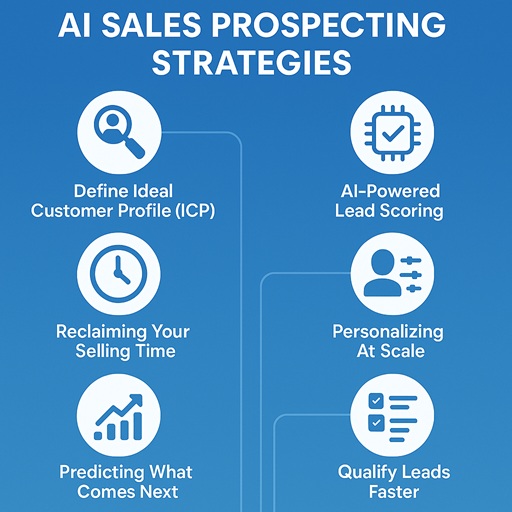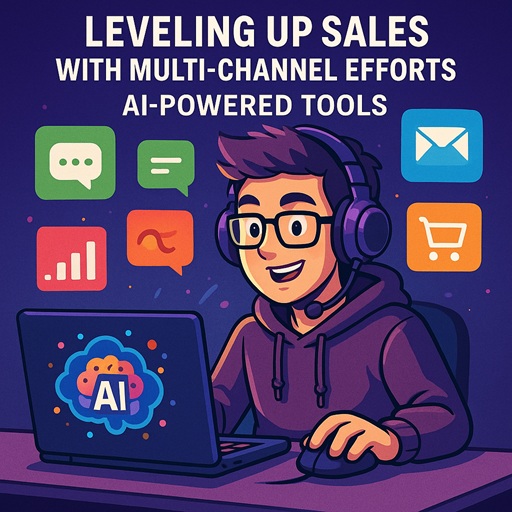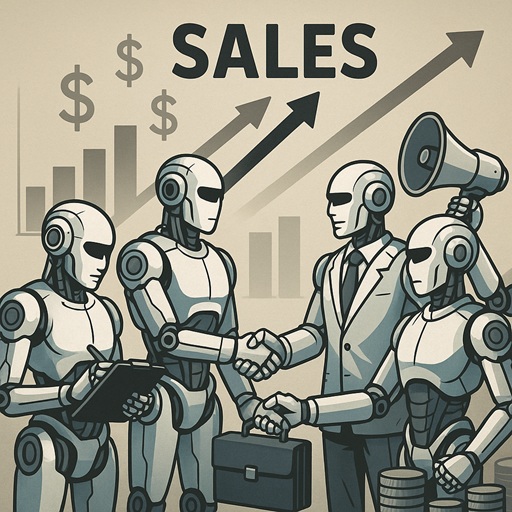For sales professionals in 2026, the adage of “work smarter, not harder” will be been more relevant than ever. Once-reliable tactics like cold calling, which is on the decline based on responses from the State of AI in Sales for 2025, as well as manual database mining still show up in your playbook, but require long research hours, negative mental health, and outreach that rarely lands.
When your competition moves fast, that lag becomes a missed opportunity.
At the organizational level, the sales department has felt AI’s impact the most. However, it’s also where speed is now the baseline. As with all complementary tech, when used correctly, AI gives sales professionals something they’ve never truly had before: time back, to build relationships and refine strategy.
The impact is clear: According to a Salesforce report from 2024 that stated 81% of sales teams, as well as a follow-up survey conducted by Seamless.AI in 2025 showed 88% of sales people reported using AI tools to improve productivity and performance. Now, the smartest teams aren’t asking if they should use AI. They’re asking how to use it better.
What Is AI in Sales Prospecting?
At its core, AI sales prospecting strategies sharpen the human touch (often called the "secret to making it in sales"). AI uses data, automation, and intelligent pattern recognition to remove the grunt work from prospecting, so sales teams can focus on what actually moves deals forward: building real connections.
Traditional prospecting often starts with a list and a lot of guesswork. AI flips that script. Instead of combing through endless databases, reps can instantly surface verified leads, prioritize the prospects most likely to convert, and personalize outreach at scale—all in a fraction of the time.
Think of AI as your prospecting copilot. It can:
- Analyze millions of data points to pinpoint ideal customer profiles.
- Score and segment leads based on real-time engagement signals.
- Automate manual tasks such as data entry, list building, and follow-ups.
- Deliver insights that help tailor your message to the right person, at the right time.
When AI tools handle the heavy lifting, sales reps can walk into every conversation with clarity and confidence. That shift turns prospecting from a numbers game into a strategic advantage.
Why AI Matters in Sales Prospecting Today
Manual prospecting is a grind. You spend hours:
- Sifting through lists
- Verifying emails
- Researching accounts
- Chasing leads that may never even open your message.
By the time you’ve pieced everything together, your competition may already have booked the meeting.
This system is unsustainable. Reps can only make so many calls or send so many personalized messages per day.
Here’s where AI tools level the playing field. When used right, it collapses what used to take hours into minutes. It automates the repetitive, amplifies precision, and helps you scale without burning out your team.
Ultimately, AI-driven sales prospecting can (and should) never replace great salespeople. Instead, it frees them to focus on closing deals.
Related: 3-minute Sales Playbook
6 AI Sales Prospecting Strategies to Try
Using AI tools smartly often comes down to weaving it into the touchpoints of finding, prioritizing, and connecting with the right leads.
AI agents help sales teams in B2B organizations manage outreach campaigns effectively, ensuring each interaction maximizes potential business opportunities. When streamlining the prospecting process, these tools provide insights that allow teams to work efficiently and focus on high-value leads.

1. Using AI to Define Your Ideal Customer Profile (ICP)
Most teams think they know their ICP. But in reality, they’re working off gut feel, not hard data.
AI changes that. Instead of starting wide and narrowing down, it surfaces the patterns you might miss, including:
- Buying behaviors
- Shared firmographics
- Engagement signals
- Deal velocity
For example, a mid-market SaaS company may use AI to analyze two years of closed-won data. As a result, they may find that their “ideal” buyer profile wasn’t the 1,000+ companies they’d been targeting: it was actually smaller teams with faster decision cycles.
When your ICP is sharp, every other prospecting strategy clicks into place.
2. Scoring Smarter With AI-Powered Lead Scoring
Manual lead scoring is static, slow, and often wrong. AI-driven lead scoring, on the other hand, analyzes real-time signals (engagement patterns, firmographic data, and behavioral cues) to rank prospects by their likelihood to convert.
This means your reps don’t waste time chasing cold leads when they should be pursuing the warmest opportunities with clear buying intent.
3. Reclaiming Your Selling Time
Ask any salesperson where their hours go, and they’ll tell you that not enough go to actual selling. Updating CRMs, researching contacts, sending follow-ups: this is the type of repetitive work that eats up their day.
AI changes that. AI agents and AI tools can automate these tasks, freeing sales teams to focus on closing deals, improving pipeline performance, and enhancing customer engagement. That reclaimed time gets redirected to high-impact work.
4. Personalizing At Scale With AI-Powered Messaging Engines
While many acknowledge that personalization matters, few actually do it well at scale. AI can help immensely here by tailoring outreach with real-time intel: pain points, company updates, buying triggers, and more.
For example, an enterprise SDR team can use AI to automatically generate personalized email openers based on public signals (such as funding news and hiring trends).
5. Predicting What Comes Next
Sales is no longer just reactive. Predictive analytics, AI’s chief capability, gives your team a view ahead by identifying:
- Accounts most likely to buy
- When they’ll be ready
- What triggers to act on
This strategy has proven impact: According to McKinsey, companies that use predictive analytics in sales see up to 20% higher pipeline conversion rates.
6. Using Conversational AI to Qualify Leads Faster
The longer it takes to qualify a prospect, the more likely it is that someone else will close first. Conversational AI solves that by stepping in early: qualifying inbound leads in real time, asking the right questions, and routing them to the right rep.
Zota reported in 2024 that, by using conversational AI, they saw a 40% increase in lead capture via web chat compared to traditional forms.
While your team rests, AI keeps working. By the time a rep reaches out, they’re talking to someone already warmed up, increasing chances of success.
Benefits and Challenges of AI in Prospecting
The real win with AI is that it helps your team focus on what actually drives revenue.
- Time back where it matters – AI handles repetitive, low-value work like data entry, lead scoring, and outreach triggers, giving reps back valuable hours every week.
- Better conversion, less guessing – By helping you zero in on the most promising accounts and tailoring outreach in real time, AI lifts response rates.
- Clearer priorities – Real-time lead scoring helps reps focus on high-intent accounts.
- Forecasts you can actually trust – With better data and sharper targeting, your forecasts are more likely to predict revenue accurately.
Of course, it’s not all plug-and-play. Like any smart tool, AI only works as well as the system around it.
- Data quality – AI can’t fix bad data. If your CRM is full of duplicates or incomplete firmographics, your results will mirror that.
- Cost of tools – The best AI platforms aren’t cheap, but neither is the time your reps lose to manual work. The trick is to invest in tools that actually integrate with your established workflow.
- Team adoption – Even the best tech fails if reps don’t use it. Training, clear workflows, and quick wins are key to building buy-in and trust in the system.
- Integration gaps – If your AI tool doesn’t play well with your CRM or sales engagement stack, you’ll spend more time fixing than selling.
For best results, you need to build a system that balances technology with strong execution.

The Future of AI in Sales Prospecting
What’s coming next for AI in sales prospecting?
AI tools will continue enabling real-time insights, personalized outreach, and smarter prospecting workflows. Sales teams leveraging AI-driven sales prospecting will enjoy faster deal closures, better engagement, and higher sales productivity.
Conversational AI
We’re moving past static forms and slow handoffs. Conversational AI is already stepping in as the first touchpoint for qualifying leads, routing the right prospects to reps.
That means the gap between inbound interest and your first response is significantly shorter.
Intent Prediction
Instead of waiting for signals, sales teams will act on them as they happen. Advanced intent models can flag when an account is likely to buy—not weeks from now, but today.
Intent prediction analyzes behavioral signals such as:
- Website activity
- Content engagement
- Product comparisons
- Buying triggers across multiple channels.
Then, it translates all this into clear, actionable insight, telling you which account is ready and why.
When your team reaches out at the moment interest peaks, you’re the first to offer real value. This proactive approach gives your pipeline a head start.
Deeper, More Natural Personalization
The future also holds messaging that adapts to context in real time, such as:
- What a company is hiring for
- What they’ve just announced
- How their industry is shifting
AI will make that level of personalization consistent and scalable across thousands of touchpoints.
Ultimately, with AI, we're heading toward a future where every human salesperson is faster, sharper, and harder to beat.
Leverage Smarter Prospecting With AI
Sales teams shouldn’t have to choose between speed and strategy. That’s why our platform is built to help you work smarter at every stage of the pipeline.
Seamless.AI helps sales professionals close the gap between effort and impact, through:
- Verified, real-time data that sharpens your every move
- Clarity and confidence instead of long ramp times
- Automated list building and precise targeting
- Insights that surface opportunities before your competitors see them.
If your sales motion still runs on manual research and cold outreach, now’s the moment to upgrade how you prospect. Contact us today!
Sources:
2025 AI in Sales Insights Pulse Report. https://seamless.ai/customers/reports/2025-ai-in-sales-report
Salesforce. 50 Sales Statistics that Reveal How Great Teams Sell. https://www.salesforce.com/in/blog/15-sales-statistics/
McKinsey & Company. The secret to making it in the digital sales world: The human touch. https://www.mckinsey.com/capabilities/growth-marketing-and-sales/our-insights/the-secret-to-making-it-in-the-digital-sales-world
McKinsey & Company. Insights to impact: Creating and sustaining data-driven commercial growth. https://www.mckinsey.com/capabilities/growth-marketing-and-sales/our-insights/insights-to-impact-creating-and-sustaining-data-driven-commercial-growth
AIMultiple. Conversational AI for Sales: Applications & Real-Life Examples. https://research.aimultiple.com/conversational-ai-for-sales/
The Economic Times. Conversational AI is already stepping in as the first touchpoint for qualifying leads and routing the right prospects to reps. https://cio.economictimes.indiatimes.com/news/artificial-intelligence/how-conversational-ai-is-redefining-sales/118708350

















